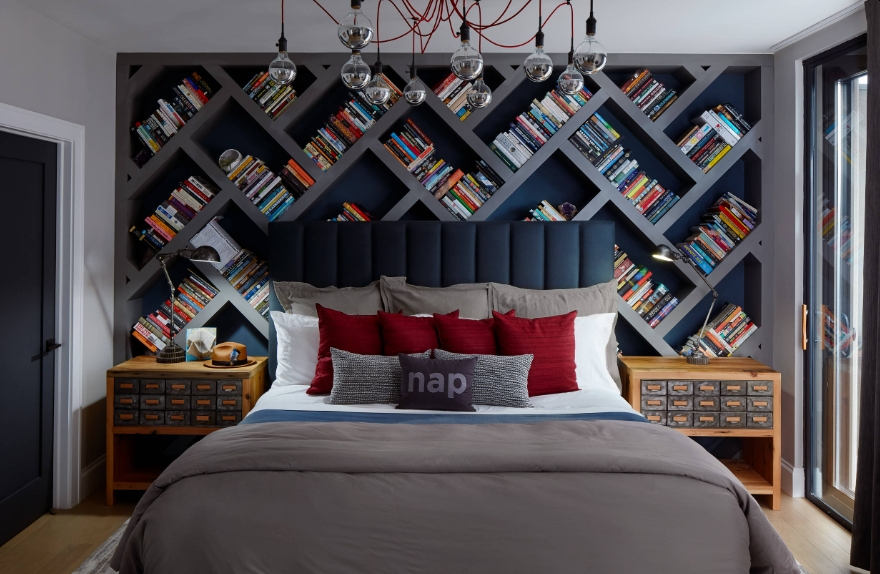What is Eclectic Interior Design?
Eclectic interior design combines two or more styles for a layered, collected look. While eclecticism is often mistaken for maximalist interior design, it’s more intentional and can suit anyone who can’t pick a favorite type of design.
Here are tips for creating an eclectic interior and this style’s origins.
The History of Eclectic Interior Design
The first types of eclectic design stemmed from France’s Beaux Arts movement and Britain’s Victorian era, both of which started in 1830. Rather than the ultra-formal designs that preceded them, creativity was encouraged.
In Victorian styles, designers decorated with a mix of patterns, colors, and heavy decor. Beaux’s Arts designers stuck with a formal, symmetrical look but relied on intricate details, like embellished walls, lavish sculptures, wall art tapestries, and ceiling murals.
Since then, eclecticism has evolved. Most of today’s eclectic spaces have one dominant style and then pull pieces from 2-3 different eras. But since this type of design is full of creativity and reflects the designers’ taste, no two spaces are the same.
Types of Eclectic Interior Design
Because eclecticism is a fusion of two or more interior design styles, there are many trends. Here’s a brief explanation of some of the most popular types of eclectic design.
- Eclectic minimalism – While most minimalist rooms are stark and modern, eclectic minimalism brings in more colors and a combination of period pieces. An eclectic minimal space will be uncluttered with sparse furniture and decor, but the furniture and accent pieces will offer texture, pattern, or saturated color.
- Boho eclectic interior design – The dominant interior design style in boho eclectic design is bohemian, which is full of texture, features low-to-the-ground furniture, and mixes patterns and colors. A designer will add furniture and decor from other styles to achieve an eclectic boho design.
- Eclectic modern interior design – The dominant interior design style in an eclectic modern room is modern, which features streamlined furniture, neutral color palettes, and minimal decor. A designer will pull in coordinating pieces from other styles and eras to make this style eclectic.
Transitional vs. Eclectic Design
Transitional design combines modern and traditional elements, where room layouts are classic and symmetrical, but furniture is more modern. Transitional design is only the fusion of traditional and modern, nothing else. On the other hand, eclectic design is the fusion of any two or more interior design styles.
How to Get an Eclectic Style
If you like different styles and favor unexpected decor and mismatched pieces, try eclectic design. While there is a lot of freedom with this style, the following tips can help you get started.
Pick a Dominant Interior Design Style
Choosing a dominant interior design style can help you lay the foundation. For instance, if you like mid-century modern furniture, you can purchase a couch and chairs for your living room in that style and layer in your next favorite pieces around it.
If you can’t choose only one style, pick two that complement each other. Examples include modern coastal, industrial farmhouse, and glam minimalism.
Start with a Neutral Backdrop
If you are bringing in bright furniture and accessories or lots of patterns, start with a neutral backdrop. You can play with wall color later, but by painting your walls white or cream now, you can focus on how your furniture works together and then devise a better plan for the walls.
Experiment with Different Eras
Eclectic style is a mismatch of designs, but even so, it’s not a clash of designs. Experiment with different furniture pieces to see how they work together. If something doesn’t look right, don’t force it.
Work with Colors
An easy way to bring eclecticism is to contrast your colors. For example, if your couch is a deep purple, add gold pillows to it, or if you have a white bedspread, add throw pillows in saturated hues. You can use the color wheel to find complementary and contrasting colors for your design.
Mix Textures
If you’re not ready to go full-on bold with colors, mix up your textures. Consider furniture pieces with different fabrics that still complement each other – linen, velvet, silk, and leather all bring different textures to a space. You take things a step further and bring in a textured rug.
Examples of Eclectic Interior Design
Regarding eclectic interior design, no two rooms look the same. Here’s how some homeowners and designers complete their eclectic looks.
Dark Eclectic Interior Design Example

The dark paint on the walls and trim highlights the white ceiling and beams, giving this room an inviting feel. The designer added plenty of texture through the sofa and throw pillows and mixed multiple design styles and colors.
Vintage Eclectic Dining Room

The dominant style in this dining room is vintage. The designer paired 19th-century American and French styles for a collected but eclectic antique look.
Eclectic Kitchen

While streamlined, the combination of farmhouse, modern, and rustic elements gives this kitchen an eclectic look. It’s also an example of keeping a minimal, uncluttered style even when drawn to eclecticism.
Eclectic Bedroom

Showcasing vintage card catalogs as bedside tables, the other details in this room take on a modern feel. The creativity and fusion of design styles create a cozy bedroom.

